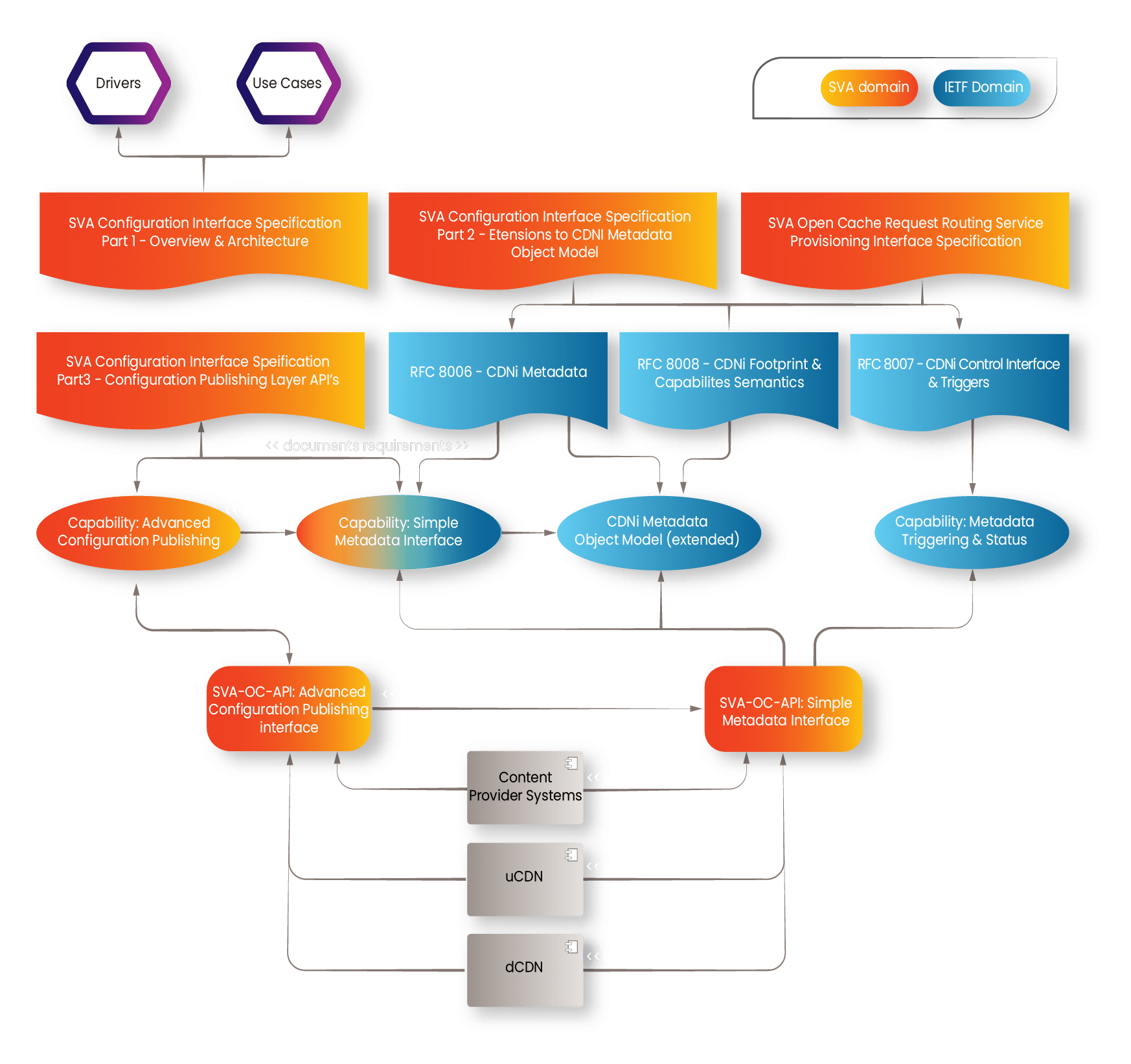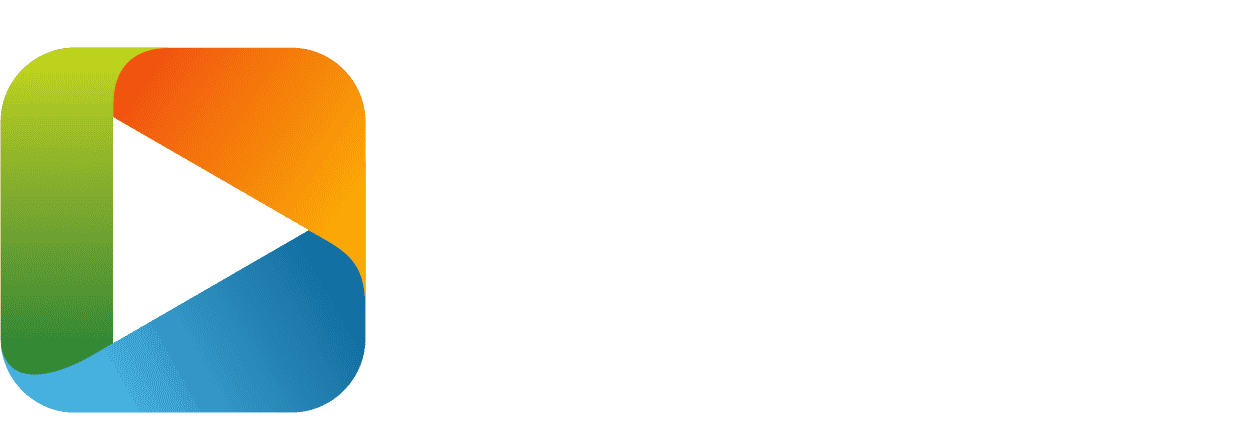SVTA Configuration Interface
- Home
- Open Caching Configuration Interface
What Is The SVTA Configuration Interface?
The SVTA Configuration Interface is an extension of the CDNi interfaces to make a general programmatic interface applicable to a variety of use cases such as Open Caching Nodes and CDNs. This generalized interface is defined by a family of documents which specify the motivational drivers, use cases, and standards for a configuration interface to facilitate interoperability within the content delivery network (CDN) and open caching ecosystems. This document family presents a layered architecture that extends the Internet Engineering Task Force (IETF) CDN Interconnect (CDNi) metadata model and adds publishing layer Application Programming Interfaces (APIs) to provide configuration management capabilities required by the CDN and open caching industries.
How The SVTA Configuration Interface Works

The diagram shown below places the various specifications, capabilities, APIs, and usage of those APIs, within the context of the open caching ecosystem, indicating the relationship between the SVA and IETF CDNi domains. Each specification documents the capabilities and/or extensions to other specifications, while each of the APIs define the specific service interfaces for those capabilities
Documents
The following documents are related to this API.


